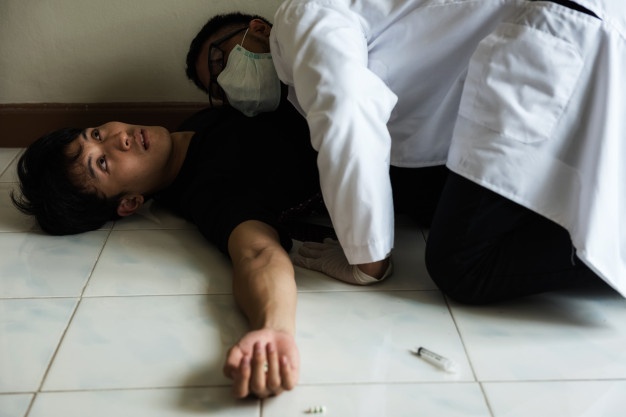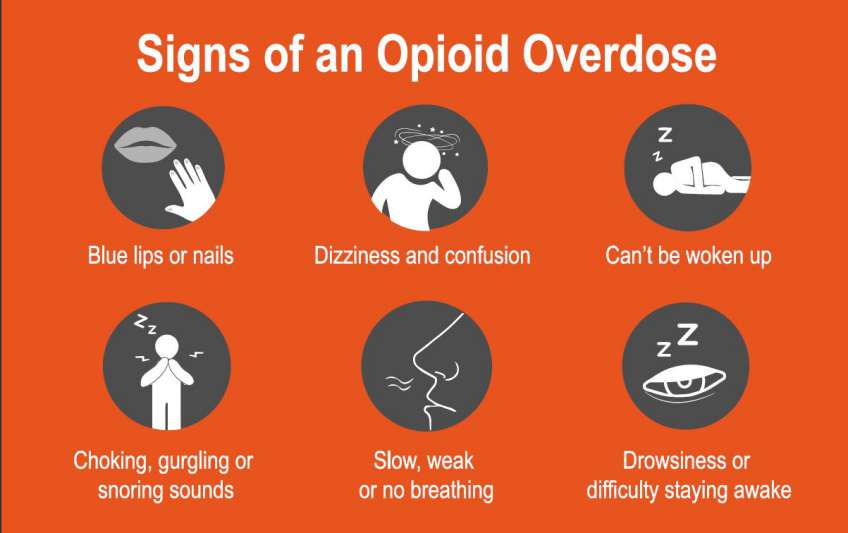Opioid Overdose Symptoms and Signs

What Are Opioids?
Opioids are a class of drugs naturally found in the opium poppy plant that works in the brain to produce a variety of effects, including the relief of pain with many of these drugs. Opioids can be prescription medications often referred to as painkillers, or they can be so-called street drugs, such as heroin.
Many prescription opioids are used to block pain signals between the brain and the body and are typically prescribed to treat moderate to severe pain. In addition to controlling pain, opioids can make some people feel relaxed, happy, or “high,” and can be addictive. Additional side effects can include slowed breathing, constipation, nausea, confusion, and drowsiness.
Opioids by Name
Opioids are sometimes referred to as narcotics and although they do relieve pain, they do not fall into the same category as over-the-counter painkillers such as aspirin and Tylenol.
The most commonly used opioids are:
Certain opioids may also be used to treat opioid use disorder, such as:
The highly addictive drug heroin is also an opioid.
Why opioids are dangerous
Opioid use does not come without risks. Regular use of these prescribed medications can increase your tolerance and dependence, requiring higher and more frequent doses. In some cases, longer-term use can lead to addiction (or what doctors will call “opioid use disorder”). In addition, opioids can restrict your ability to breathe when taken at a higher dose, and when misused, can lead to a fatal overdose. The risk of respiratory depression (slowing or even stopping your breathing), increases if you have never taken an opioid before or if you are taking other medications/drugs that interact with the opioid. Opioids, which can interact with diseases, too, should only be used if needed for pain, including if alternatives for pain control are not effective.
Last year, provisional data from CDC’s National Center for Health Statistics indicated that there were an estimated 100,306 drug overdose deaths in the United States during a 12-month period, an increase of 28.5% from the 78,056 deaths during the same period the year before.
The new data documents that estimated overdose deaths from opioids increased to 75,673 in the 12-month period, up from 56,064 the year before. Overdose deaths from synthetic opioids (primarily fentanyl a synthetic opioid 50–100 times more potent than morphine) and psychostimulants such as methamphetamine also increased in the 12-month period ending in April 2021.
A new study published in JAMA Network Open suggests that the opioid epidemic has not spared older Americans, as overdose deaths among Americans ages 55 and older have steadily increased from 1999-2019.
The study examined opioid overdose deaths among Americans ages 55 and older that occurred between Jan. 1, 1999, and Dec. 31, 2019.
The researchers found that the annual number of overdose deaths among older Americans increased from 518 in 1999 to 10,292 in 2019. During the period studied, 79,893 older Americans died from an opioid overdose. Eighty percent of these people were between ages 55 and 64.
The study also found Black men ages 55 and older were four times more likely to die from an opioid overdose than other men in the age range.

What are the symptoms of opioid overdose?
Symptoms of opioid overdose and their severity will vary depending on how much of the opioid medication has been taken. Symptoms typically include:
- Changes in heart rate
- Extreme fatigue
- Loss of alertness
- Slowed or absent breathing
- Small or constricted pupils
Call 911 or your local emergency services right away if you experience any of these symptoms.
How to Respond to an Opioid Overdose
If taken differently than prescribed, opioids can cause death by slowing, and eventually stopping a person’s breathing. However, quick response to an opioid overdose, including administering naloxone and calling for medical assistance, can prevent brain injury and death.
What is naloxone?
Naloxone is a medicine that rapidly reverses an opioid overdose. It is an opioid antagonist. This means that it attaches to opioid receptors and reverses and blocks the effects of other opioids. Naloxone can quickly restore normal breathing to a person if their breathing has slowed or stopped because of an opioid overdose. But, naloxone has no effect on someone who does not have opioids in their system, and it is not a treatment for opioid use disorder.
How is naloxone given?
Naloxone should be given to any person who shows signs of an opioid overdose or when an overdose is suspected. Naloxone can be given as a nasal spray or it can be injected into the muscle, under the skin, or into the veins. Steps for responding to an opioid overdose can be found in the Substance Abuse and Mental Health Administration’s (SAMHSA) Opioid Overdose Prevention Toolkit.





